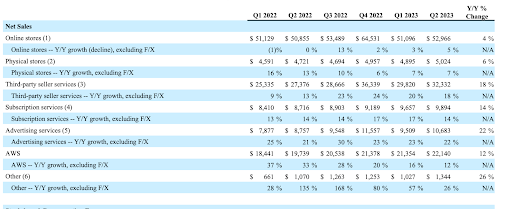(Drivebycuriosity) - The financial crisis from 2008 is still in our minds. I am aware that the meltdown was partly caused by
the bursting housing bubble that lead to a chain reaction of bank
crashes. But I think there is a second reason for the severe recession: The oil
price spike from 2007/08 (charts below).
The Super Storm Effect
I believe both trends, the
crashing house market and the oil shock, worked together and merged
into a perfect storm. I borrowed the term from the meteorologists: 2 bad
weather systems came together and amplified each other.
I remember the infamous Super Storm Sandy
that devastated parts of US East Coast in 2012. A hurricane,
coming from the south, merged with a bad weather system coming from north:
"A storm like Sandy would normally be losing steam as it moved into
colder, less energetic waters..however, a trough of low pressure dipping
down from the Arctic is
feeding the hurricane, actually strengthening its intensity as it moves
northward" commented one meteorologists (livescience).
( source)
I think something similar happened in the US economy. The American banking system tumbled in a crisis because before 2008 the banks had lend too much money to home buyers, especially financially weak customers (subprime loans). In 2007 & 2008 many debtors got delinquent which caused some of the banks to go bankrupt.
To make things worse the creditors had sold highly speculative financial instruments which were bound to their subprime loans (mortgage-backed securities and other derivatives). When the housing bubble burst these financial instruments got worthless.
Unfortunately worldwide many banks had invested too much in these speculative instruments - and were sitting now on worthless investments. So the losses spread all over the globe, which caused a chain reaction of bank bankruptcies. These bankruptcies weakened the general belief in banks (credit comes from the Latin word "credere" meaning believing) and ruined also the trust in financial markets and in the general economy, starting a recession.
( source)
Unprecedented Oil Price Rally
Unfortunately the weakening economy got hit by an unprecedented oil price rally, creating the perfect storm. Around the year 2000 the oil market had ended a 2 decades long period of stability and the price of oil started to climb. The images above show that around 2003 the ascent started to accelerate and the climb of the oil prices got steeper and steeper. From summer 2007 through July 2008 the oil price spiraled from about $50
to $147!
A study by Prof. James Hamilton (University of California, San
Diego) shows that this oil price shock turned the economic slowdown into a
severe recession (econbrowser).: "The oil price increase over 2007:H2-2008:H1 should be regarded
as a key development that turned the slowdown in growth into a
recession" (archives).
Other researchers came to the same results: "Oil prices played a role in
eventually bursting the US subprime bubble....In 2003, the average
suburban household spent $1,422 a year on gasoline, which rose to $3,196
in 2008 (oilprice). "Rising household energy prices constrained household budgets and increased mortgage delinquency rates" (oilprice).
Low income suburban homeowners suffered most from the rising gas
prices. Poor homeowners are called "subprime" and their delinquencies
are known as "subprime crisis."
Peak Oil Hysteria
Why did the ascent of the oil price accelerate and why did it price spike in 2008 when the US economy already was slowing down?
There were several reasons:
1. The begin of the Iran sanctions in 2006 and the sharpening of the conflict in the
following years - especially the curbing of Iranian oil exports - lead
to a sharp rise of oil prices in the years 2007 and 2008 ( youtube).
Speculation on a possible war against Iran - which could disturb oil
supply significantly - fanned the oil price spiral further.
2. Some Opec members reduced oil production because of homemade
problems. Venezuela cut off oil sales to ExxonMobil during a legal
battle over nationalization of the company’s properties there and oil
production in Nigeria was shut down thanks to oil worker strikes and
terror attacks (rff.org).
3. Investing in oil became fashionable. Hundreds of hedge funds,
specialized commodity funds and others invested
into oil in the hope of further rising prices. There was talk about Peak Oil. Many believed that oil production reached its peak and will shrink.
Speculators
bought financial contracts (futures) which are tied to the price of oil - often indirectly indirectly via ETFs & bank certificates which are backed by oil (Financialization). So oil became an asset which is traded on financial
markets like stocks, currencies and bonds.
The financialization process
pumped billions of dollars into oil futures and created an additional
demand for oil which drove prices upwards. Rising prices allured more
speculators who followed just the trend (momentum players) leading to a
snow ball effect. And Goldman Sachs called an oil price of $200! (reuters )
In 2008 I worked for a German online service covering financial &
commodity news. There was a huge demand for "oil news" because many
readers (users) invested in oil. Many believed in the peak oil
theory, which claimed that the world will soon run out of oil and its
price can only go up. They also set bets on geopolitical risks, the
above mentioned Iran an other conflicts, that should make oil even more
scarce and expensive.
And in the first half of 2008 banks like Goldman Sachs recommended to
invest in oil as an insurance against falling stock prices! Many
speculators followed the advice and their purchases drove the oil price
higher - the herding behavior worked as a self-fulfilling
prophecy for a while. So losses on the stock market fueled the oil
price spiral - till the oil price bubble finally burst.
Pushing Into The Abyss
And there was another factor which pushed the financial markets even deeper and finally into the abyss. Hedge funds and other speculators made bets on further falling stock & bond prices. These gamblers either shorted vulnerable stocks (they borrowed them and sold immediately in the hope to buy them back for a much lower price) or they purchased put options and similar financial instruments, which move reciprocal to stock or bond prices.
Massive shorting accelerated the fall of
the stocks which intensified the pessimistic sentiment and inspired so
more short selling, creating another snowball effect. It worked again as
self-fulfilling prophecy.
After the bankruptcy of Lehman Brothers,
which brought huge gains for short sellers, groups of short sellers
tried to repeat their success. They attacked everyone who seemed
vulnerable, especially the banks. Federal Reserve member Richard Fisher
(Dallas Fed President) described these groups as " big money" that "does
organize itself somewhat like feral hogs. If they detect a weakness or a
bad scent, they go after it" ( marketwatch).
The massive bets against banks and many
other companies destroyed not just the trust into the attacked firms,
these bets destroyed the trust into the whole economy. Bankruptcies and
tumbling stock prices seemed to confirm those attacks. Thus the stock
market went into a downward spiral which paralyzed the whole economy.
Companies ceased investing & hiring, the recession was on the brink
to turn into a disaster like the great depression of the 1930s. The
destruction of trust lead to a spiral of pessimism that almost sucked the
whole economy into the vortex of a depression. In spring 2009 massive
stimulus programs (QE) and a zero interest policy stopped finally the
downward spiral.
The Federal Reserve could have minimized the damage by saving Lehman Brothers and flooding the markets with liquidity latest in Summer 2008 to dampen the destructive herding behavior, but that would be another blog post (driveby Lehman ).
Conclusion: I think that the 2008 crisis was an odd accident caused by
an oil shock (Iran conflict, commodity speculation, peak oil theory,
herding behavior) in combination with severe bank problems created by
the bursting housing bubble and over-investments in highly speculative financial instruments. Something like that could happen again, but I believe that the probability is very low.


































